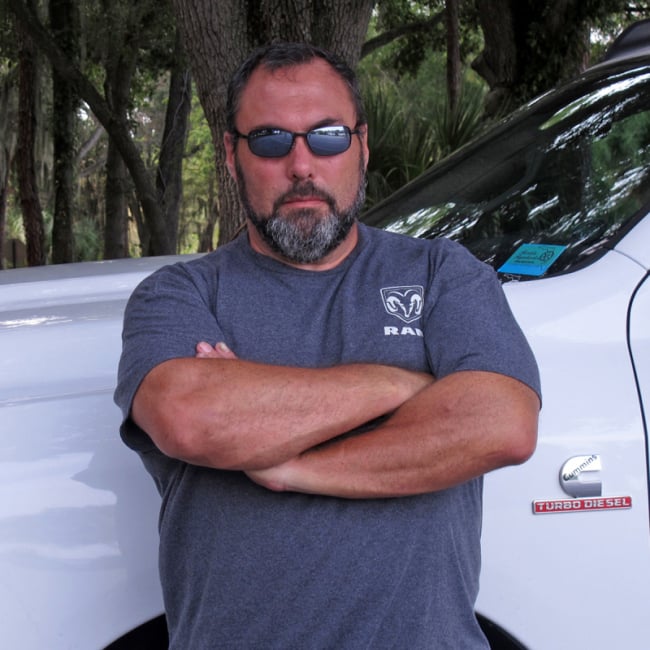When it comes to harnessing horsepower and launching a car from a dead stop, it takes a suspension designed for performance, and tires that will stick to any road surface. But, if you are Alexandre Kielwasser, you might have another way to accomplish the task. When was the last time you saw an all-wheel-drive Chevelle?
The front-drive section was taken from a GMC Typhoon, and Alex custom-built the front frame section to mount the system.
He has owned his ’71 Chevy, for 25 years. The car has been built with many different engine combinations throughout the years, but one day while he driving, he was passed by a truck emitting a very high-pitch sound. The recognizable sound of the turbo got Alex thinking, “Why not install a turbo on my Chevelle?”
If one turbo is good, Alex needed two of them. So, he located a pair of Garrett GT35R turbos, and mounted them to his small-block. The engine is built around a Dart block with forged internals, and a compression ratio of 9.7:1. The solid-roller camshaft features 255/262 degrees of duration at .050-inch lift, and with the use of his homebuilt flow bench, he was able to port the Edelbrock Victor Jr. heads which now flow 310 c.f.m.
Relocating the engine required serious firewall reconstruction.
Fuel is delivered through a set of Injector Dynamics fuel injectors, and an Electromotive TEC 3 ECU controls the fuel and the direct-fire coils. An Aeromotive fuel pump pulls the go-go juice from a homebuilt 33-gallon aluminum fuel cell. Now complete, the engine produces 32 pounds of boost and 1,250 horsepower, all while ingesting E85.
When installed in the car, not only did Alex have a lot of power, but he tells us, “I could easily overpower the tires on the highway at 100 mph. The time had come for another modification, so I started to think about an all-wheel-drive combination.”
To accomplish this highly-irregular modification, Alex found a GMC Typhoon, and removed the front end drivetrain. He was initially hoping that he could install it as-is, but quickly realized that he would need to build a suspension to fit the system and ensure correct suspension geometry.
He welded the Chevelle’s frame to steel plates on the floor, and started to cut and remove the original cross member and suspension arm mounts. This modification required he move the front wheels outward 3/4-inch so he could install the front differential. He also needed to remove a lot of the original floor, and reconstruct it to accommodate the drivetrain. The engine was relocated 12 inches rearward, 2 inches higher, and 2 1/2 inches towards the passenger side of the car.
He then installed a Jake’s Performance 4L80E transmission that was filled with a 3,500 rpm converter. Behind that is an NP149 transfer case. These components were never designed to work together, so he had had the input of the transfer case resplined to match the 4L80E output shaft. In order to have enough space for him to drive the car, he had to adjust the Kirkey seat to clear the transfer case (he also did some minor cutting and welding the bottom inner side of the seat, with no ill-effects to driver comfort).
According to Alex, “I wanted something that looks stock. When I open the hood, many people don’t even see that it is all-wheel drive.” Alex also tells us that the car handles unbelievably well, and it actually has 50/50 weight distribution. We’re in awe that Alex was able to complete this conversion in a mere nine months.
Not many guys would have the patience or wherewithal to complete a conversion like this, but Alex has proven that anything an be done when you set your mind to it.
What do you think of Alex’s Chevelle? we want to hear from you. Also, we want to make you famous, so send us pictures of your car and we’ll feature it in out new series, Homebuilt Heros. What are you waiting for, we want to see your car?






























